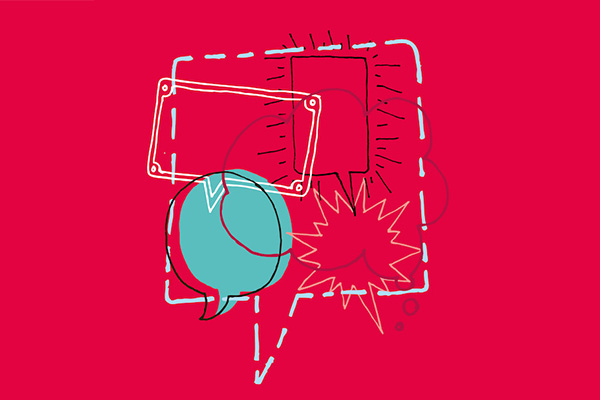I recently went to a friend’s BBQ where, if I’m honest, the choice of food was limited (particularly for a vegetarian like myself) but the choice of recreational drugs was prevalent. I should have expected this, being that those in attendance (I only knew two people before I arrived) were around my age and social class and were all professional people; academics, bankers and therapists. Call me old fashioned (and slightly disappointed) but there was no jelly and ice cream, although someone had bought about 70 Waitrose profiteroles - still unopened in the morning. There were however, balloons (if you’re globophobic you may want to stop reading now).
I recently went to a friend’s BBQ where, if I’m honest, the choice of food was limited (particularly for a vegetarian like myself) but the choice of recreational drugs was prevalent. I should have expected this, being that those in attendance (I only knew two people before I arrived) were around my age and social class and were all professional people; academics, bankers and therapists. Call me old fashioned (and slightly disappointed) but there was no jelly and ice cream, although someone had bought about 70 Waitrose profiteroles - still unopened in the morning. There were however, balloons (if you’re globophobic you may want to stop reading now).
It’s on odd sight to see a bunch of (dare I say middle aged?) people, standing/sitting around, with their faces obscured by a large, colourful, rubberised, spherical object.
“Do you want a balloon?” I was asked.
“Haven’t you got a pump?” I replied.
“You fill it with this [points to a contraption and a box of canisters] and inhale; it’s laughing gas, the sort you get when you’re at the dentist or giving birth” came the response…
Actually it is nitrous oxide, or NOX (also known as Whip-Its - named because the gas is also found in whipped cream aerosol cans), a gas that is more commonly known for its use in medicine, and since my observations a couple of weeks ago I had never come across it used like this before. Its use as a ‘legal high’ has been scrutinised by the press. It has reportedly been appropriated by the middle classes, is predominately sold on the streets of London, but also found at music festivals, and purchased for around £3 a canister. As you might expect, depending on which article you read, from the Daily Mail to The Guardian, you could be left feeling dismayed at the ‘craze’ taken up by young people (yes, once again), or wondering what all the fuss is about.
The ‘high’ that is felt by inhaling nitrous oxide (directly from a balloon) happens because the body is deprived of oxygen, but more specifically, there is a lack of oxygen to the brain. This creates a feeling of dizziness and euphoria, an experience that is presumably similar to that achieved during autoerotic asphyxia- a sexual practice that deprives the brain of oxygen at the point of orgasm. Any deprivation of oxygen into the body reduces the amount of oxygen that is carried around in the blood stream which therefore affects all organs in the body, including the heart. It has been reported that exposure to nitrous oxide causes short-term decreases in mental performance, audio-visual ability, manual dexterity, along with more serious conditions such as; blood vessel haemorrhages, heart attacks, seizures and coma. A number of deaths have also been linked with the (social) use of nitrous oxide; ‘How Hippy Craze Killed Our Gifted Son’(The Daily Mail, 13/08/14) and Hollywood actress Demi Moore was reportedly hospitalised in 2012 after inhaling the gas.
One may therefore appreciate the medical concerns that have been raised but is the recent press coverage warranted? It is summer after all, a time when ‘feral’ kids (another Mailism) are unleashed on towns and cities throughout the country, so perhaps it’s only right to question another dubious activity that threatens the social order. The Local Government Association (LGA) has warned against the use of nitrous oxide and councils are currently allowed to seize canisters from sellers under ‘unauthorised street trading’ regulations, despite it being a legal substance. It has been reported that 1200 canisters were confiscated in Hackney on one Saturday night alone.
Fifty years after the infamous clashes between Mods and Rockers in the seaside towns of Brighton and Margate, a subject that the sociologist Stanley Cohen chose to explore in his 1987 book; ‘Folk Devils and Moral Panics’, the British Press continue to drive public opinion, scrutinise the behaviour of a subculture and seemingly seek to influence policy decision (albeit subtly). It’s a dangerous precedent for some elements of the press to adopt this approach; in doing so it creates a ‘control culture’, where the media sensationalises an event and then calls for a punishment (or legislation) that persecutes the offender(s). 'Amplification', occurs through the media's coverage and this serves to appeal to the wider public so that they in turn sympathise with ready-made ‘opinions’ about the necessary course of action. These opinions are present by members of the ‘moral barricade’ (a term also coined by Cohen) i.e. prominent members of the community such as politicians, bishops and newspaper editors. We can see what happens next.
As public consumers of news (particularly the printed press) we have experienced a wave of moral panics throughout the press in recent years. A notable example was the case of Leah Betts who died in 1995 after taking ecstasy. This tragic event produced another moral panic around the area of recreational drug use, in particular MDMA, and sparked a controversial poster campaign using the title ‘Sorted’ (a term which in ‘drug circles’ refers to the successful purchase of ecstasy). What the campaign failed to mention was that Leah’s death was in fact a result of water intoxication and was not directly due to the consumption of MDMA. The press asked how this could happen to a nice middle-class girl (her father is an ex-police officer, her stepmother a nurse) and went on the attack, targeting young people. One journalist referred to taking ecstasy in a ‘post Leah Betts Britain’ as ‘the equivalent of slaughtering babies’. We now know that ecstasy is a safer drug than previously thought. Mary Hartnoll, the Director of Glasgow Social Services, wrote at the time that the risk from taking aspirin was greater. David Nutt, ex-chairman of the Advisory Council on the Misuse of Drugs (ACMD), said that taking ecstasy was ‘less dangerous than riding a horse’. Originally manufactured as a slimming product, research is continuing into the therapeutic use of ecstasy. Findings published in 2012 (by Imperial College London) report that it might have a significant use in treating anxiety and PTSD.
Drugs exist and their widespread use acknowledged. They are a part of our everyday. Part of our very culture. Demonising and ultimately criminalising those who use them is not effective. Effort should be better focussed on tackling stigma and promoting recovery more pragmatically. It is of no use to anyone, not least the relationship between users and non-users, to create a feeling of hysteria around the consumption of drugs. This does nothing to aid recovery, neither does it strengthen community cohesion (arguably an essential tool for successful recovery). Interestingly, during the AIDS epidemic of the 1980s, the American writer Susan Sontag suggested that; “society needs to have one illness which becomes identified with evil, and attaches blame to its victims.” Is history repeating?
So what will become of nitrous oxide? The Huffington Post has recently printed an article entitled ‘Laughing Gas: Is It As Dangerous As The Government Wants Us To Believe?’, which questions the media response (in particular the Daily Mail) and the use of headlines including words such as; ‘potentially lethal’ and ‘deadly high’. The premise of the article is that the whole response has been blown out of proportion (pun intended). As previously mentioned, nitrous oxide has a clear and acceptable use in medicine, when mixed with oxygen, and a study published in June of this year (before the current spate of newspaper articles) suggests that its use is also being considered in the battle against depression. Time will of course tell but a knee jerk reaction isn’t warranted. We should be more concerned about a culture that unnecessarily demonises young people and questions their autonomy.
And in case you’re wondering.
…”I don’t even do helium” I conceded.
Now that’s a subject for another blog article.
Related articles
-
Blog: Let's get down and talk dirty
Steve Bodycomb
How language can to used to help or hinder a person's recovery journey from substance and alcohol misuse
-
Blog: The language of Pain
Steve Bodycomb
How language and art can be used to help diagnosis and treatment of medical conditions
-
‘One Love’ – America’s new million dollar industry
Mark Newman
Legal marijuana is sweeping across the US and a market for drugs tourism is emerging in its wake.




Join the discussion
Comments
Please login to post a comment or reply
Don't have an account? Click here to register.
Thank you for commenting on
my blog article. It was written as a
commentary to an activity I observed that I was previously unfamiliar with, so
I appreciate clarification of some of the facts.
I happen to disagree with it
on a couple of counts though;
Firstly, canisters can be
purchased for around £3 (on the street or at festivals) and a quick Google
search shows that a box of 100 canisters can be bought for around £35
(considerably cheaper), so I wouldn’t deem it as expensive, certainly not by
comparison to other recreational drugs.
Secondly, it is fair to say
that the majority of consumers seem to be young(er) people. Therefore, it might well be considered a
‘craze’ or a current trend and very likely to be peer led. I doubt that people are weighing up alternative
methods, they will very much want to be part of said ‘craze’. I would also suggest that others methods of
suffocation are less ‘acceptable’ on a high street or at a festival…
I accept that the Daily Mail
article quoted does not portray a death from inhaling nitrous oxide from a
balloon. However, I never said it did; ‘A number of deaths have also been linked
with the (social) use of nitrous oxide’. There was a link. It was initially thought that the victim had
inhaled nitrous oxide and in fact (and not determined otherwise until the
autopsy) and the consumer himself thought he was buying and taking nitrous
oxide (this further highlights the dangers of buying legal highs online). Ambiguity is often associated with media representations,
particularly when reporting deaths from drug taking. Let’s not forget the circus and the headlines
that surround the death of Leah Betts, which we now know wasn’t caused by
taking ecstasy, but is often linked with it.
Once again, your comment is
appreciated.
Hi, There are some important errors in this article. The high caused by nitrous oxide is not due to oxygen deprivation, it is psychoactive in its own right, a dissociative anaesthetic, it gives a trippy effect, not just a headrush. People wouldn't pay for an expensive gas if it was equivalent to just suffocating yourself for free! Using nitrous oxide in a balloon does cause a temporary slump in blood oxygen level, like holding your breath, but not to a degree that is likely to cause damage. Cellular damage/death from oxygen deprivation begins after unconsciousness, after about 3 minutes minimum without air. Ironically in an article with wise words on Leah Betts, the death cited (the Daily Mail article) has nothing to do with nitrous oxide, it was a case of mistaken identity. Nitrous oxide has risks. Deaths have resulted NOT from the balloon method but from breathing the gas out of bags placed over the head. A few cases of addiction have been reported, and overuse strips vitamin B12 from the body, eventually causing nerve degeneration. In comparison to other drugs, risks are relatively manageable but can't be entirely eliminated.
The case mentioned in the Daily Mail article used in this, and many other articles, as an example of a death linked to nitrous oxide, did not actually involve nitrous oxide at all. The substance that caused the death was a mixture of solvents including butane (ie, lighter fuel), which actually is deadly.
See here:
http://www.hamhigh.co.uk/news/...